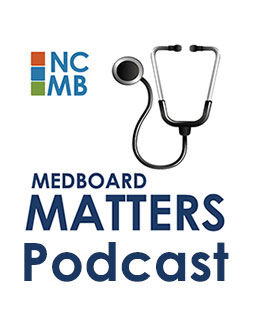NC Medical Board Position Statements: What changed in 2014?
Comments: 1 comment Print Friendly Version | Share this itemThis year, we break with that tradition. Last year the NCMB adopted a comprehensive new position statement on treating chronic pain with prescription opioid medications. With references, this position statement is more than 50 pages long – It’s simply no longer practical for the Board to publish hard copies. A downloadable pdf copy of the complete position statements is available online. Click here to access the complete position statements. Individual statements are also posted online. We are in the process of reorganizing the position statements by category to make them easier to browse.
In this issue, you will find:
• A listing of all position statements that were reviewed, but not amended, in 2014
• The text of the supplementary position statement explains the Board’s intent in adopting position statements and guidance on how they should be used by licensees.
• The full text of position statements that were either revised or newly adopted in 2014, with the exception of the “Policy for the use of opiates for the treatment of pain.” This position statement is available at www.ncmedboard.org We are currently in the process of reformatting the policy to make it easier to read and use and expect to post a quick reference version online later this year. The titles of new position statements are green; Titles of revised position statements are purple.
What are the position statements of the Board and to whom do they apply?
The North Carolina Medical Board’s Position Statements are interpretive statements that attempt to define or explain the meaning of laws or rules that govern the practice of physicians,* physician assistants, and nurse practitioners in North Carolina, usually those relating to discipline. They also set forth criteria or guidelines used by the Board’s staff in investigations and in the prosecution or settlement of cases.
When considering the Board’s Position Statements, the following four points should be kept in mind:
• In its Position Statements, the Board attempts to articulate some of the standards it believes applicable to the medical profession and to the other health care professions it regulates. However, a Position Statement should not be seen as the promulgation of a new standard as of the date of issuance or amendment. Some Position Statements are reminders of traditional, even millennia old, professional standards, or show how the Board might apply such standards today.
• The Position Statements are not intended to be comprehensive or to set out exhaustively every standard that might apply in every circumstance. Therefore, the absence of a Position Statement or a Position Statement’s silence on certain matters should not be construed as the lack of an enforceable standard.
• The existence of a Position Statement should not necessarily be taken as an indication of the Board’s enforcement priorities.
• A lack of disciplinary actions to enforce a particular standard mentioned in a Position Statement should not be taken as an abandonment of the principles set forth therein.
The Board will continue to decide each case before it on all the facts and circumstances presented in the hearing, whether or not the issues have been the subject of a Position Statement. The Board intends that the Position Statements will reflect its philosophy on certain subjects and give licensees some guidance for avoiding Board scrutiny. The principles of professionalism and performance expressed in the Position Statements apply to all persons licensed and/or approved by the Board to render medical care at any level.
*The words “physician” and “doctor” as used in the Position Statements refer to persons who are MDs or DOs licensed by the Board to practice medicine and surgery in North Carolina.
Click here to access the NC Medical Board Position Statements that were newly adopted, revised or reviewed in 2014.
Comments on this article:
I strongly object to the current practice of using
By Laura P. Schulman, M.D. on Feb 04, 2015 at 3:30pm
Physician Assistents as primary providers, often without direct physician supervision. Many are using the title “Doctor.” I have personally witnessed this in the course of my own treatment for arthritis. As is known, PAs have a total of 24-27 months of training, compared to our 3-7 or more YEARS of post-graduate training. And now the Nurse Practice Act has been revised to allow NPs to hang out their own shingles, without direct physician supervision! Really, I am embarrassed by these elevations of mid-level practitioners to the status of fully trained doctors, to the point where I am considering leaving medical practice. Even on a financial level, the median compensation of a new PA is (according to advertisements) $90,000, more than I made as a mature pediatrician!
